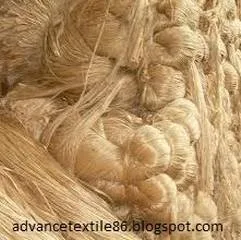Introduction
Jute
fiber is a long, soft, shiny best fiber that can be cut into thick, strong
threads. It is mainly composed of plant materials cellulose and lignin. Its
various advantages and disadvantages such as below-
Advantages of jute fiber
1.
For this purpose, jute matting is used to prevent flood erosion, and natural and
biodegradable fibers are required.
2.
It is mainly used for wrapping raw cotton yarn and for making sacks and thick
cloth. The fibers are woven into the backing for curtains, chair covers,
carpets, area rugs, hessian fabrics, and linoleum.
3.
In many of its uses it is being replaced by synthetic materials, some uses have
taken advantage of the biodegradable nature of jute, where synthetics are
unsuitable.
4. Jute fibers are used alone or mixed with other types of fibers to make needles
and ropes. Jute butts, and thick edges of trees, are used to make cheap clothing.
5.
The main breakthrough came when the automobile, pulp and paper, and furniture
and bedding industries began to use jute and associated fibers with their
non-woven and blended technologies in the manufacture of nonwoven,
technological textiles and blends.
6.
Jute is used to make a number of fabrics such as hessian fabrics, sacking,
creams, carpet backing fabrics (CBC), and canvas.
7.
Jute as a home textile has many advantages, either replacing cotton or blending
it because of its strength, durability, color, and light fiber. Its UV
protection, sound, thermal insulation, low thermal conductivity, and
anti-static properties make it an intelligent choice in home decor.
8.
Jute is also used to make membrane suits, which are used as fungi and are
similar to grass or brushes.
Disadvantages of jute fiber
1.
The crease resistance of jute fiber is very low.
2.
The property of the drop is not good enough.
3.
The shade turns yellow when sunlight is used.
4.
If the jute gets wet, it will lose its strength.
5.
The jute is not so flexible.
6.
Jute has no luster.









0 Comments